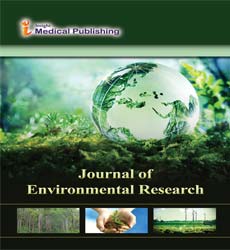Humic Substances: The black gold of the pedosphere
Abstract
Statement of the Problem: The current state of global soil and water pollution has led to deteriorated ecosystems with a severe paucity of nutrients, flora, and fauna. Industrial effluents containing heavy metals, pesticides, and organic pollutants like dyes, are often left untreated into the nearest water body. Most places fail to comply with regulatory norms, due to high treatment costs and multi-step procedures. Moreover, regions employing inadequately treated wastewater for irrigation may face the problem of heavy metal deposition. Other xenobiotics like radionuclides enter the ecosystem due to nuclear accidents and reactor operations. In order to combat the rising pollution crises and lower its immediate effects on the environment, we have explored a simple yet efficient system of biosorption using naturally occurring, ubiquitous humic substances (HS). Methodology & Theoretical Orientation: HS are rich in functional groups that interact with xenobiotics and form long-lived complexes, acting as buffers of the ecosystem. They positively influence the physical, chemical, and biological properties of soil and give rise to auxin-like molecules, therefore rightly termed as ‘black gold’ of agriculture. Batch biosorption method was carried out with all essential parameters for the removal of heavy metals like Zn, Ag, Co, and radionuclides like 137Cs and 85Sr with humic acid (HA) as the biosorbent. Findings: High adsorption percentages were calculated. The reactions were governed by rapid kinetics and were spontaneous, feasible, and exothermic; thus, conducive at R.T. Conclusion & Significance: In the field of wastewater treatment, HA acts as an eco-friendly, inexpensive biosorbent for the removal of toxic heavy metals and radionuclides, which is difficult to achieve via conventional techniques. A simple HA filter can prevent the pollution of agricultural soils, when treated water is used for irrigation. Since HA is a component of SOM, it does not pose any ill-effects on the environment.
Open Access Journals
- Aquaculture & Veterinary Science
- Chemistry & Chemical Sciences
- Clinical Sciences
- Engineering
- General Science
- Genetics & Molecular Biology
- Health Care & Nursing
- Immunology & Microbiology
- Materials Science
- Mathematics & Physics
- Medical Sciences
- Neurology & Psychiatry
- Oncology & Cancer Science
- Pharmaceutical Sciences
